The following essay by El Inglés is the third in a six-part series that examines the sociopolitical effects of mass immigration into the Western democracies.
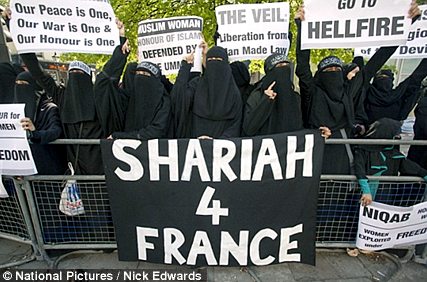
Ethno-Religious Diversity and the Limits of Democracy
by El Ingles
Part Three: Homogeneous and Polarized Systems
The first post in this series introduced a statistical analysis of political systems that includes various terms referenced by abbreviations in later parts of the text. For the reader’s convenience, a list of those abbreviations and their meanings is below:
| Abbr | Term | Explanation | ||
| PP | Policy Point | Policies actually being implemented by a government at any point in time | ||
| IPP | Individual Policy Point | Policies preferred by an individual | ||
| DI | Discontentedness Index | Distance between the PP and an IPP | ||
| MDI | Mean Discontentedness Index | Average of the DIs of individuals in the population | ||
| TD | Threshold Discontentedness | The level of DI above which an individual considers the government illegitimate | ||
| CZ | Contented Zone | The interior of a circle having a radius of the value of TD | ||
| DZ | Discontented Zone | The area outside the CZ circle | ||
| DZF | Discontented Zone Fraction | The fraction of the population occupying the DZ |
See Part One and Part Two for a more detailed explanation.
Homogeneous and Polarized Systems
Political Systems for Dealing With Moderate Polarization
That a more diffuse distribution of IPPs and the greater political disagreement they represent create problems for democratic polities is well understood by political theorists, even if not in these terms. It is in response to them that democratic polities usually have multi-tiered political systems, systems that can allow these problems to be ameliorated to some extent. Let us consider this important point here by considering a hypothetical two-tier system.
In this system, there are two levels at which democratic politics operates: a national level and a regional level. At the national level, the system works the same way as the systems we have already described. However, at the regional level, the system is split up into two parts. Each part corresponds to a different region of the polity, and each has its own PP and jurisdiction (represented by the straight lines). In these regions, each of which contains only part of the population of the polity as a whole, people are exposed to a regional set of policies too.
Diagram 11 shows this polity at the national level. Here, IPPs are spread out in a band concentrated around the horizontal axis. The DZF is 25%, and we will take the MDI as being 1.8.
However, we have stipulated that this is a two-tier system, with a regional level of government with its own policies applicable only to people in the region. We represent this regional level in Diagram 12, Here, the blue circular area on the left represents Region A, the green circular area on the right Region B. We see that all IPPs in the regional system diagram are within the regional CZs of their respective regional PPs, set by regional governments. We see that DZFs are now zero for both regions, and we will say that both MDIs have a value of 0.8.
What is the significance of this? We simply assign a weighting to each level, which represents its political authority as a fraction of all political authority in the system. Using percentages, we will stipulate that in this initial hypothetical example, the weighting is 50:50, meaning that political authority is equally distributed between the two levels. The MDI is therefore 50% of the national MDI plus 50% of the population-weighted average regional MDIs, or 1.3 for the system as a whole, less than the 1.8 it would have been in a single-tier system. The DZF is the average of the national DZF and the regional DZF, and represents a composite picture taking both levels into account. In this case, it is 12.5%, which is (25% + 0)/2.
Thus, by introducing regional autonomy, the system has created greater political stability, with the MDI falling from the original 1.8 to 1.3, and the DZF falling from 25% to 12.5%. If the split were 60:40 national to regional, these figures would be 1.4 and 15% respectively, as the more polarized national politics took on more precedence. If it were 40:60, the figures would be 1.2 and 10% respectively.
Another way of seeing this is to draw the two regional system diagrams independently of each other. Region A looks like this:
Region B looks like this:
This makes it clear that, at the regional level for both regions, the systems are fairly politically homogenous, with low MDIs and DZFs equal to zero. Hence their contribution to the political stability of the system as a whole.
The obvious problem with this model as stated is that we have assumed that the distribution of political diversity in the polity is such that political beliefs correlate very strongly with geographical location. What reason is there to expect the people in Region A, for example, to have such similar opinions?
In reality, there is no reason to assume that political beliefs and geographical location correlate so strongly, if at all. Let us make this point clear by re-drawing the two diagrams above in one diagram. Now, the positions of the IPPs have the same significance as always, but instead of fairly arbitrarily drawing a line on the system diagram to create two separate areas, one green, one blue, let us use green and red IPPs to represent which of the two component regions of the country the people represented by the PP live in: Greens live in Region 1, Reds live in Region 2. We stress again that the colours do NOT correspond to political affiliation. Political positions are represented by the positions of the IPPs, as always; it is geographical location that is represented by colour.
In our first version, which is simply Diagram 11 redrawn with colour, the political heterogeneity is matched very well by geographical distribution; people of like political beliefs live in the same regions. The regional diagrams will be the same as Diagrams 13 and 14. MDIs and DZFs for this system will be as they were in the above calculations, as, we say again, this is simply the same system presented differently.
In our second version, in Diagrams 16, 17, and 18, political beliefs correlate reasonably well with geographical distribution, but not as well as before. Region 1, which contains the green population, can no longer keep everyone in the CZ, with the DZF having risen from 0 to 5%, and the MDI from 0.8 to 1.5. Region 2, which contains the red population, can perhaps keep everyone in the CZ with a non-equilibrium PP, but not with an equilibrium PP. In Diagrams 17 and 18, we have drawn both regional system diagrams with what we take to be equilibrium PPs. Region 2, the red region, now has a regional MDI of 1.5 and a regional DZF of 5%. Calculating composite figures for the system as a whole with a 50:50 weighting now gives a composite MDI of 1.65 (as opposed to 1.3 before) and a composite DZF of 15% (as opposed to 12.5% before). The national contributions to these figures have not changed, as individual IPPs are not moving. However, the regional contributions have gone up. This is why the composite MDI must rise as regional political homogeneity breaks down, with a commensurate fall in political stability. However, the weighted MDI will still be lower than it was in the single-tier system, so there is still some utility to this system.
In our third and final version, we have a situation in which there is no obvious relationship between geographic location and political at all. The equilibrium regional PPs are now all to be found in the centre of the system diagram, as the distribution of the greens, reds is essentially symmetrical around that centre. But this is where the national PP is! The regional MDIs are now as high as the national MDIs, and everyone in the DZ on the national diagram must be in the DZ on their respective regional diagram. Irrespective of the weightings of the two tiers, therefore, MDIs and DZFs will not change. In these cases, multi-tier political systems have no utility in increasing political stability.
What this analysis shows is that political diversity that clusters geographically is much easier to accommodate than political diversity that is smeared relatively evenly throughout the polity in question. Countries such as Belgium, Spain, and Switzerland give insights into this truth, with political stability being maintained through the granting of substantial political autonomy to regions inhabited largely by ethnic groups who have ambivalent relationships with the ‘nation’ states that they are part of.
If we look at a country like the US and treat it purely as a two-tier national (or federal) and regional (state) system, we see a similar dynamic at work. Of course, the state structure of the US was not created in an attempt to ameliorate the problems posed by political polarization. It grew organically as new territories became settled enough and populated enough to be incorporated into the growing United States. Nonetheless, it seems intuitively obvious that a country as large and diverse as the US would have evolved some sort of regional structure anyway, and its current structure serves some similar function. Let us consider the US federal system in light of the model we have developed here.
We are all familiar with the stereotypes of the pickup-driving, Stetson-wearing, gunslinging Texan conservative and the environmentally-conscious, latte-drinking, Californian liberal. These stereotypes encapsulate certain truths about the distribution of political beliefs and attitudes in the US, however rough and ready they may be.
Considering gun control will help us understand the point. We have then, our Texan conservative who sleeps with his rifle by his side and his .357 Magnum under his pillow. We also have our Californian liberal who believes that all private gun ownership should be banned. If these people coexist in a single-tier political system, then we can imagine three basic scenarios: a) Private gun ownership is banned, our Californian liberal celebrates, our Texan conservative flies into a rage and starts talking about secession, b) private gun ownership up to and including belt-fed 20mm cannon is made legal, our Texan conservative celebrates and maxes out his credit card, our Californian liberal flies into a rage and starts talking about secession, and c) our Texan conservative gets to keep his rifle but loses his .357 Magnum, resulting in serious disgruntlement on his part over the loss of his beloved revolver, and serious disgruntlement on the part of our Californian liberal over the continued availability of rifles, but no talk of secession. This would be a textbook example of our linear, fixed-MDI system where the authorities’ best option is to try and keep people out of the DZF through compromise.
Might it not be better then, if Texas and California were allowed to have different gun laws? In a hugely mobile society such as the US, where picking up and heading for new climes is a large part of the national character, such a system is unusually well-suited to the people and would result in the benefits we have seen already in our hypothetical examples of two-tier systems. Of course Texans and Californians will still grumble about each other, but they will probably be better off on the whole.
We reiterate that all of this is predicated on a high level of political-geographic correlation between states and/or a pronounced willingness on the part of Americans to move around the country to increase such clumping. If this clumping were to be radically reduced, then the extra political stability the US and its component parts obtain by virtue of their federal system would be radically reduced, as we saw in our examples above.
It is worth noting here that a different development could have similar effects. We stipulated above that, in our hypothetical example, the weightings of the national and regional levels were 50:50. If this were to alter, and the national/regional weighting were to become 60:40, then we would have to take 60% of the national MDI and only 40% of the regional MDI in calculating our composite MDI. The whole point of this type of two-tier system is that regional MDIs are lower than national MDIs due to their reduced political diversity, so any increase in the weighting of the national MDI would necessarily increase the composite MDI and reduce the political stability of the system. In the US, this would have to be expected if the authority of the federal government were to increase at the expense of the authority of state governments.
In closing this discussion of multi-tiered systems, we should ask: if multi-tiered systems decrease composite MDIs across the whole system, why not take the weighting of the regional level to 100%, a state which would represent complete political independence and the complete replacement of higher composite MDIs with lower regional MDIs. The answer lies in the fact that there are often advantages to being part of larger political units that outweigh the disadvantages of having to make political concessions to the other population groups in those larger polities. If this were not so, there would be no aggregation of people into larger political units at all, and the split of one polity into two would then have to be followed by the break-up of those two into four, the four into eight, and those into yet more, ad infinitum. The advantages of belonging to a larger unit are not easily represented on our two-dimensional system diagrams (they would belong somewhere in the 98 unnamed axes of political variation we discarded earlier on), but it is important to mention them here to convey the principle and forestall the criticism that they have been ignored.
From Homogeneous to Polarized Systems
We have argued that the benefits that can be expected to result from the application of democratic politics are functions of the political diversity of the underlying human substrates of the polities in question. We have further argued that, when political diversity is significant, the introduction of multi-tiered democratic systems may become a necessity, and that such multi-tiered systems are most viable when politically disparate groups are geographically clustered.
It stands to reason that, when extreme political polarization exists in a society, it may well be the case that there exists no system diagram, with any conceivable number of tiers, or any conceivable set of PPs, consistent with the relatively low MDIs and low DZFs that characterize peaceful and harmonious democratic polities. In these cases, the exercise of democratic politics simply ends up becoming part of a battle between different factions in the society in question, part of a war conducted by other means.
So far, we have discussed system diagrams and the polities they represent as if all the IPPs were fixed in place. But it is clear upon a moment’s reflection that this cannot be true if we introduce the dimension of time into our model. It is simply not the case that the political positions of individuals or the political characters of societies are unchanging over time. Accordingly, we must recognize that there will always be a chance that homogenous societies are becoming more polarized or polarized societies more homogeneous.
Polarized societies becoming more homogeneous are undoubtedly a worthy topic for consideration but they will have to be considered by some other author in some other document. Here, we concern ourselves with the way in which relatively homogeneous societies can drift towards polarization.
Generally speaking, there are three obvious ways in which a reasonably homogeneous system could start to become more polarized. In the first, disparate political groups already in the society grow ever further apart due, initially, to events over which they have little control, and then due to both external events and internal polarization. An example of this would be the polarizations observed in so many European countries during the 1920s and 1930s between communists and fascists, prompted by the aftermath of World War I and the Great Depression.
The second way in which this drift can occur would be the sudden disappearance of a stabilizing factor in a system in which political polarization is latent, on ethnic or religious grounds. This factor, possibly external to the polity itself, would have exerted a pressure on the various ethnic groups that strongly discouraged expressions of ethno-religious tribalism, effectively forcing the actors on our system diagrams to be more moderate in this regard. Taking Yugoslavia as an example, we can see two shocks, one internal and one external, that could be considered to have contributed to its eventual collapse: the death of Tito in 1980, which brought to an end to his crucial moderating influence, and the fall of the Berlin Wall in 1989, which suggested that Communism was not long for this world, in Yugoslavia or anywhere else.
The third, final, and for our purposes most relevant form of drift away from homogeneity is that in which entirely new groups spring into being within a polity as a consequence of immigration. The existence of these peoples on the same system diagram as the host people will have two destabilizing effects on the country in question. Firstly, it will introduce both essential and non-essential diversity into the system for the reasons we have already outlined. Secondly, and crucially, their presence will also create a very strong tendency towards polarization in that system.
Polarization is a vital part of our analysis, and, in terms of our system diagrams, is simply the tendency of certain clusters of people and the IPPs that represent them, to repel each other. Readers will understand that, in the real world, this will correspond to the political positions of these groups becoming ever more distant, ever more opposed, in direct response to the behavior and attitudes of the other. Let us view this phenomenon, a sort of reverse gravity, through some system diagrams.
First, we will see two diagrams, one representing a standard homogeneous population, and one representing that population with a small immigrant population. Here, immigrants are shown as red IPPs, and the native population as green IPPs. This is in contrast with our multi-tiered polity discussion, where colours were used to represent regions. Here, no regional information is conveyed in the system diagram.
This new immigrant population will shift the equilibrium PP in its own direction by a small amount. In so doing, it will have a minor effect on the MDI. However, the immigrant population is so close to the equilibrium PP, so close to what is effectively the political consensus in the society, that the effect would be very small. The effect on the DZF in this case is zero, though this need not be the case. If we were to ask what sort of immigrants might be represented by this change, we can think of the Taiwanese-American immigrants we discussed earlier, who added very little non-essential diversity and some small but non-trivial essential diversity to the system diagram of the US.
In contrast with this, let us imagine making a change of equivalent relative size to the British system diagram by introducing the same amount of Somalis, as per our other earlier comparison:
Here, an immigrant influx of the same relative size as before results in a larger shift, and a definite increase, in the MDI, along with a larger movement in the equilibrium PP. This may not be obvious visually from the diagram, but we can see intuitively that any increase in the concentration of IPPs towards the outer fringes of the IPP distribution represents a stretching outwards of the distribution. We will define increases in the MDI and DZF brought about in this way as first-order polarizations of the system diagram.
As there are no good reasons for Western peoples to welcome Somalis to their countries and many good reasons to want them kept out, it stands to reason that many in the host population will be unhappy with this Somali immigration. These people are likely to become ever more insistent that no more of this sort of immigration should be allowed, that those Somalis in the country should be repatriated as and when possible, that they should be awarded fewer benefits, and that their criminality should be clamped down on in ever-more-draconian fashion. Some smaller number may respond by attacking Somalis on the streets or attacking buildings and facilities associated with them. This change in their positions caused by the first-order polarization will be defined as second-order polarization.
Going back to our system diagram, let us assume that the Somali population has increased by a factor of five. We will show two diagrams, the first only showing the first-order effects, the second the first and second-order effects combined.
To clarify, Diagram 25 shows the first-order polarization caused by the diverging political beliefs of the Somalis, and Diagram 26 shows both that and the second-order polarization that is the rest of the population reacting to the presence of the Somalis.
To summarize the developments, we have a pre-immigrant population with an MDI of 1.4 and a DZF of 12.5%. A single Somali IPP is added through immigration, which takes the MDI to 1.45 and leaves the DZF at 12.5%. Then the Somali population grows, through immigration or natural growth, to constitute 5 IPPs. First-order polarization, as the Somalis use their power at the ballot box to influence policy, results in an MDI of 1.7 and a DZF of 22%. Second-order polarization, as the native population reacts to this development, takes the MDI to 1.9 and the DZF to 29%. Notice that, as the polarization heightens, the stretching of the IPP distribution along the horizontal axis is accompanied by a flattening along the vertical axis, which is indicative of how the tribal issues underlying the polarization are starting to push other political issues to the sidelines.
All subsequent polarization effects are second-order, including those of the immigrants themselves, in that they are reactive in nature. Interactions between immigrant peoples and the host society can, and probably will, result in further polarization over time, with everything that implies for the political stability of the society as a whole. To what extent this political diversity can be peacefully accommodated within the same society is then an open question.
When growing immigrant communities are granted political influence commensurate with their numbers, then the equilibrium PP in the system in question will, all other things being equal, drift towards them. This is the nature of first-order polarization, which must draw the equilibrium PP towards new immigrant groups. However, whether or not it will drift towards them in practice, is another matter entirely, due to the existence of second-order effects. As there is no way of predicting how large these effects become, how quickly, or in which part of the population, there is no way of predicting how the equilibrium PP will move in response to immigration.
In the next diagram, Diagram 27, we see further second-order polarization, and a PP shifting away from the immigrants to the left. Here, the growing immigrant community creates such a large backlash that the political consensus is actually moving away from it as it grows, as the PP moves left. Even with the PP in its equilibrium position, our MDI has now risen appreciably in contrast with, say Diagram 23, our DZF is soaring, and we have moved from being a homogenous system, to ever greater degrees of polarization.
This helps us address a naïve analysis of democratic politics in Western countries, and the way it is influenced by Muslim immigration in particular. The analysis is roughly as follows. Immigrant group X has higher fertility rates than the native population, and continues to immigrate. This creates an ever-denser population cluster consisting of those immigrants, a cluster that must pull the equilibrium PP ever closer towards it through democratic mechanisms. There is nothing anybody can do about this, it is now written in the stars. Indeed, the trend most be expected to accelerate, as the growing influence of the immigrant group will allow it to bend immigration policy itself ever further to its will.
Here, the analysis tends to bifurcate, with those broadly on the political left cheering it on, and those on the right weeping and tearing their hair out, or mouthing desperate inanities about how these immigrants are ‘natural conservatives’ who just happen to vote overwhelmingly for parties of the left. Fortunately, we can now see that both parties are mistaken in seeing these changes as only working in one direction, at least as a matter of general principle, as the exact contours of second-order polarization are radically unknowable. There is no way of knowing where the equilibrium PP will move to, even assuming the system ends up in equilibrium at all.
Moreover, there is a more important sense in which the naïve analysis is incorrect. As we have already made clear, any given system diagram will have an equilibrium PP, at which the MDI is minimized for the system, and the DZF close to a minimum in symmetrical systems. But this tells us nothing about what the MDI and DZF will actually be when the PP is in this equilibrium position. Both values could be very high, and the first- and second-order polarizations caused by immigration will, over time, cause our distribution of IPPs to spread out. If this process goes far enough, the MDI and the DZF will both end up taking on such high values as to cause a disintegration of civil order, a breakdown of democratic politics, and even outright civil war. When this happens, ruminations on who will win the next election become meaningless, as meaningless as saying, in early 2015, that Bashar Assad and the Alawite community he is a part of cannot continue to govern Syria as they are only a small minority of the population and could therefore not win an election by themselves.
Here, we reiterate what we consider to be the crucial advantage of our model with respect to the implicit assumptions of the overwhelming majority of analysis of this matter in the mainstream media. Too often, discussions of these matters are purely partisan in nature, in that they focus only on the likelihood of particular political parties or coalitions of parties gaining power given the demographic and political trends in the polity in question. But this focus on trying to determine who can gain a majority of the vote, or the seats in an assembly, tends to obscure the brute underlying reality of immigration-induced political polarization and its implications, a reality that a structural analysis would expose. Consider France. Does the presence of ever-larger minority groups of Third World origin guarantee that a nativist, nationalist party like the National Front cannot gain power? Or does it actually make it more likely that the National Front will eventually take power, as the native French, seeing their country swallowed up by the peoples of their former colonies, are driven to support it? To rephrase, could the National Front ever have hoped to gain power in the absence of mass immigration?
There is no way of reliably answering questions like this before the fact, especially given the complexities of electoral systems and voter behavior. As such, they could be batted back and forth endlessly until events preempted them, this way or that, with one side being proved wrong and the other right, and very little enlightenment would be enjoyed by any participant prior to the fact. By ignoring these matters and focusing instead on the raw political diversity in the polities in question, we gain crucial insights that cut across the problem in a different way. The admission of large numbers of inassimilable Muslim peoples into France seeded a dynamic of polarization that will play out as follows:
| a) | There exists a divergence of views between French and Muslim populations in France, consisting of both essential and non-essential political diversity. | |
| b) | The population cluster representing the immigrants becomes ever larger, pulling the PP further towards itself. This is first-order polarization. | |
| c) | Those French whose IPPs are furthest from the immigrants’ IPPs become ever more distressed and concerned by this development, and support ever more restrictive policies with respect to immigrants and would-be immigrants. This is second-order polarization. | |
| d) | The IPPs of the immigrants and at least some of their political supporters become more polarized in the opposite direction, for opposing reasons. More moderate, right-leaning French also start to become polarized as well. | |
| e) | As the contested issues come to dominate the political sphere, political difference comes to consist primarily of these differences, which we have said is represented by a flattening of the IPP distribution towards a single axis, or political issue. This is a characteristic of tribalized societies. | |
| f) | As the MDI and DZF soar, as they must under these circumstances, some event will eventually act as a trigger for a descent into outright civil conflict, revolution, civil war, or a military coup. |
This is the course that any Western society will tread if it allows its towns and cities to be swamped by inassimilable, hostile Third World immigrants, which means most obviously Muslim immigrants. Given the obvious truth that that which we want to be true of our societies cannot be true if they are wracked by these phenomena, it follows that ensuring that this type of polarization does not take place must be the first priority for any Western government.
Coming up in Part Four: Applying the Model to Western Political Structures

For previous essays by El Inglés, see the El Inglés Archives.

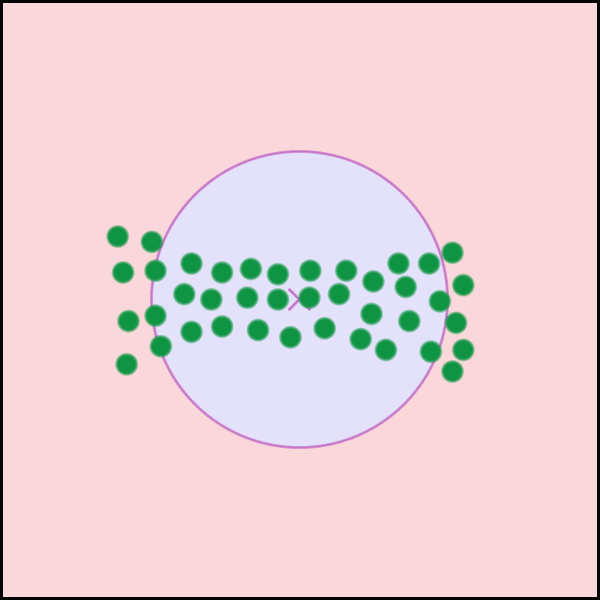
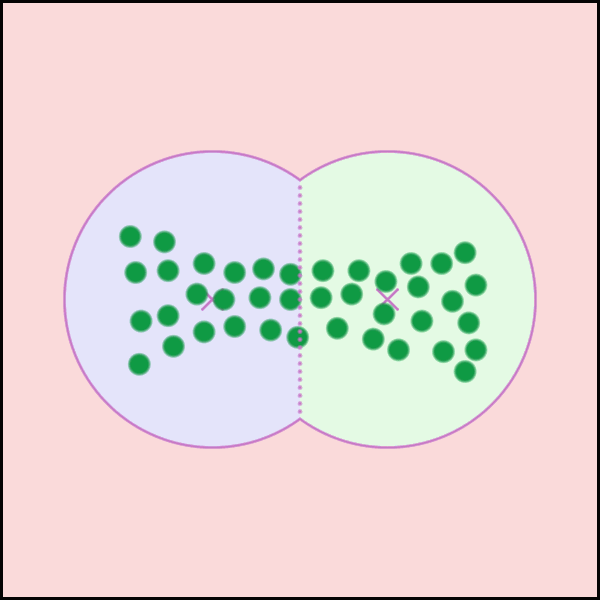
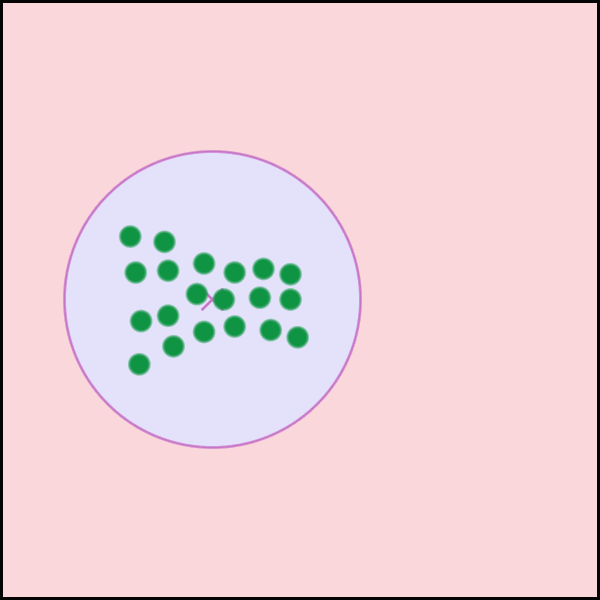
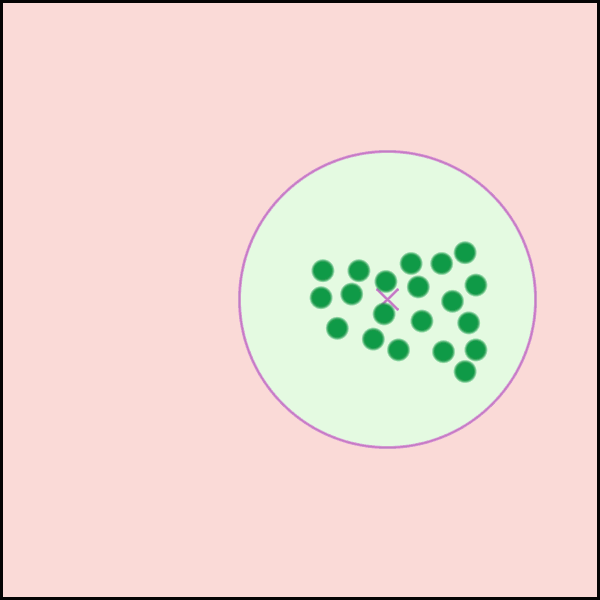
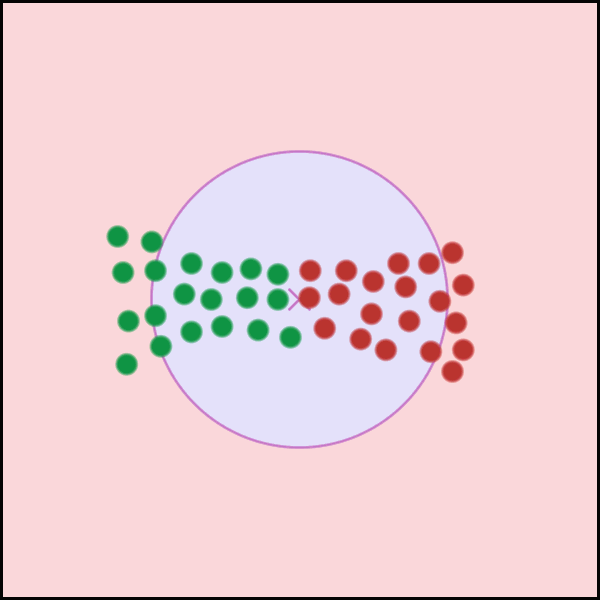
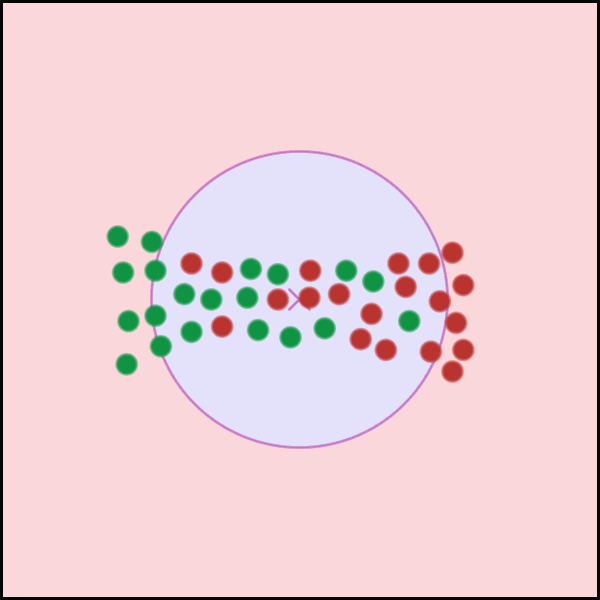
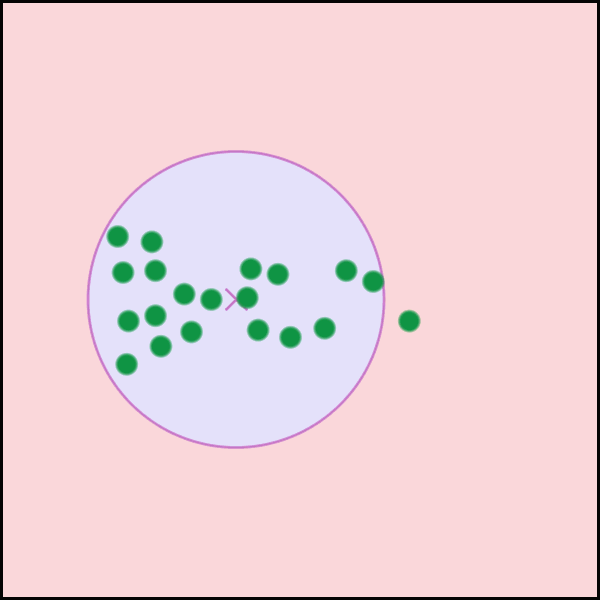
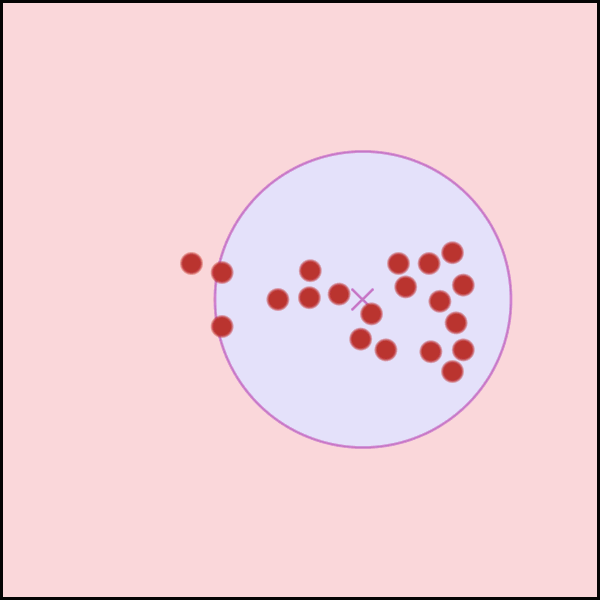
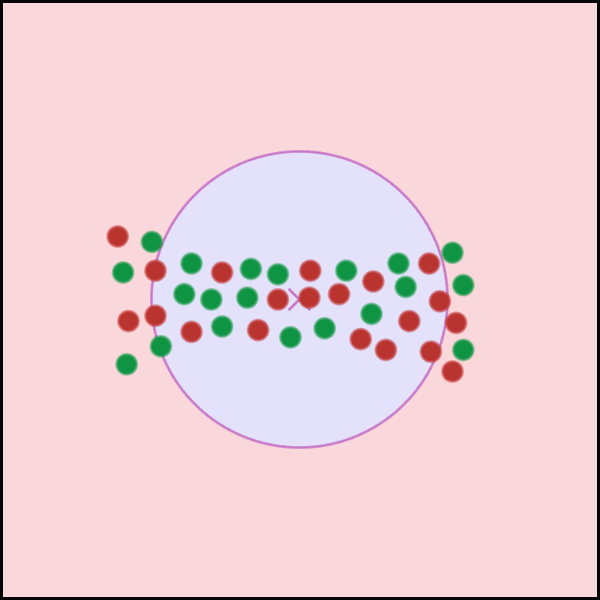
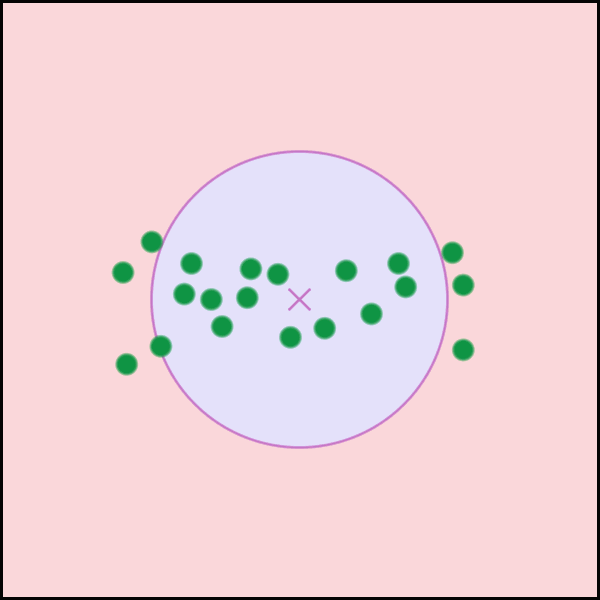
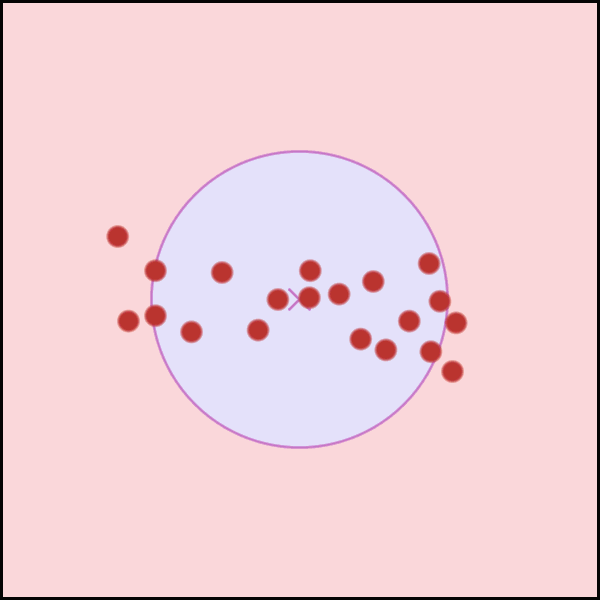
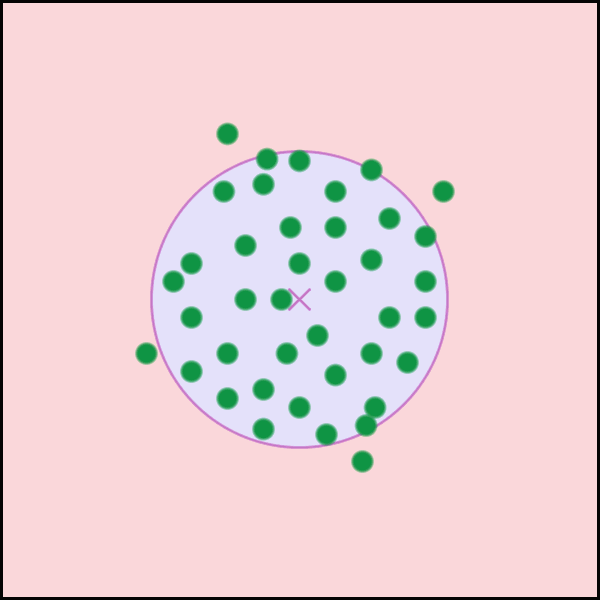
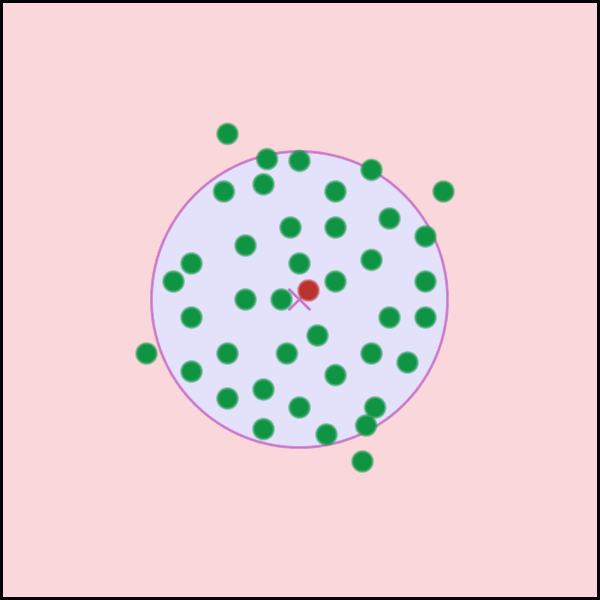
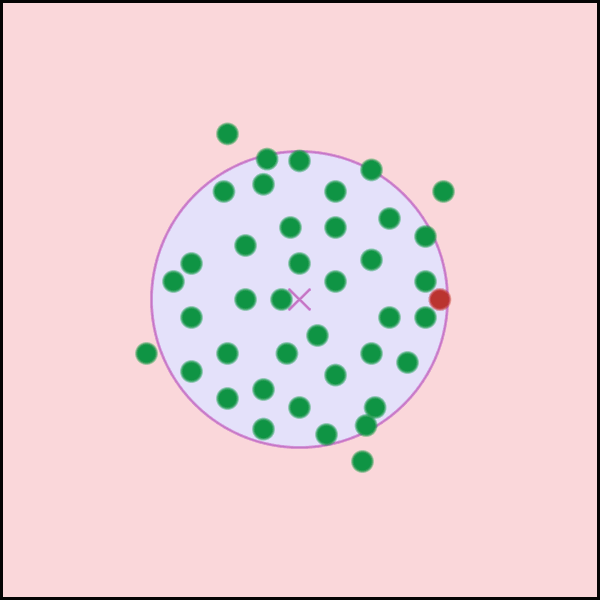
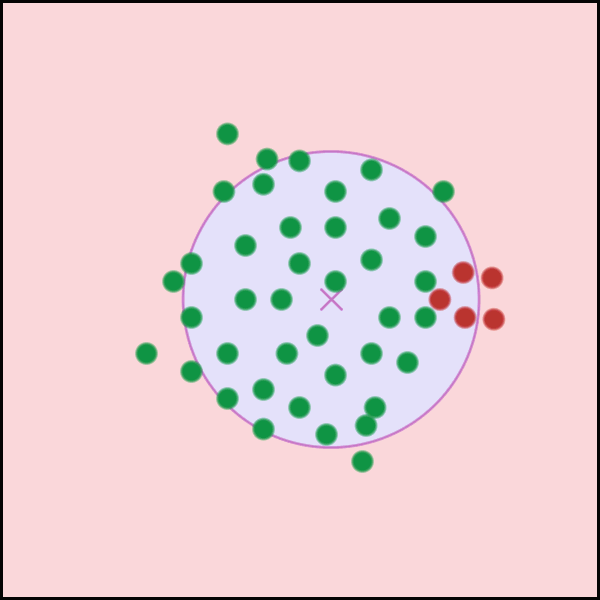
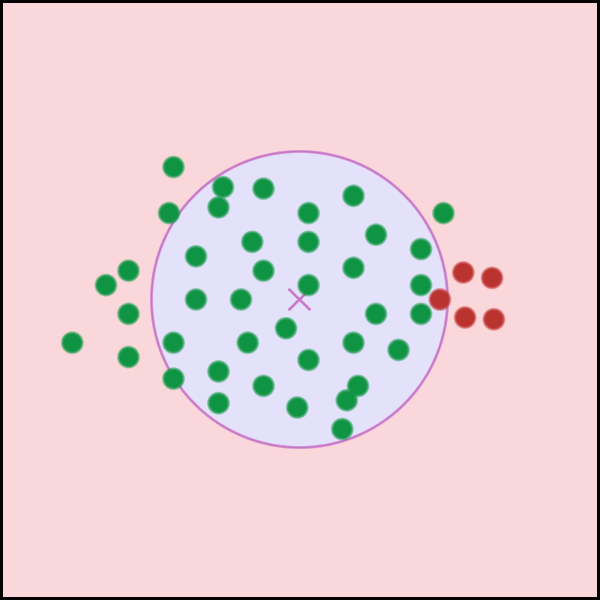
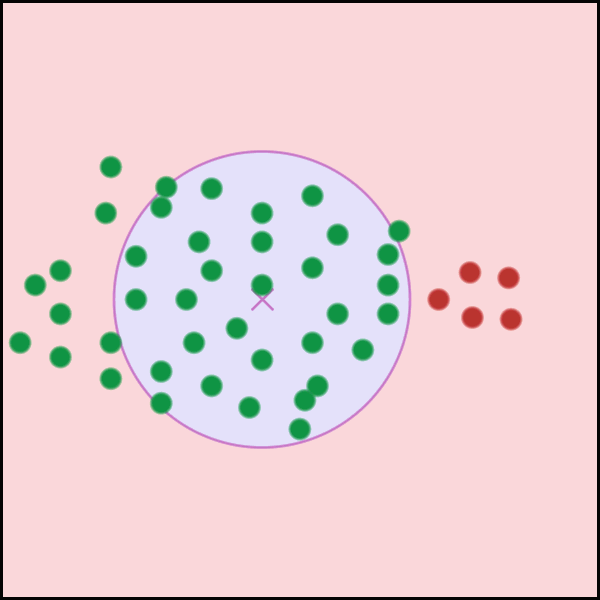
The article is reminiscent of the theories put forth by Isaac Asimov’s Hari Selden in the Foundation Trilogy.
So far it seems like the main problem with this model is that the Contentedness Zone is not actually static and varies by culture, as does the response to discontent. (One culture may see marching around with signs and voting as reasonable ways to address their discontent whereas another may go directly to violence.)
http://www.examiner.com/article/as-muslim-population-grows-what-can-happen-to-a-society
Given the level of violence even in countries that are nearly 100% Muslim, either the radius of the DZ is much smaller in Muslim countries, the reaction to discontent is more violent, or both.